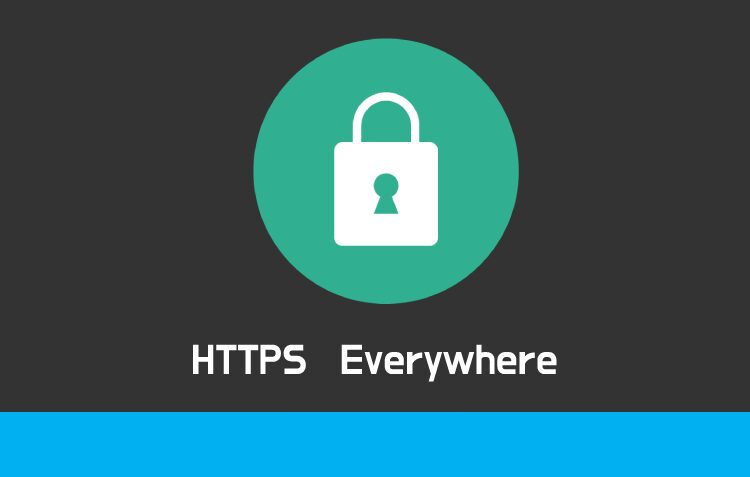Google provides us the opportunity to write our own thoughts into blogs through Blogger.com. Now, it allows its custom domain users to secure their particular blogs by enabling HTTPS. In the cases where users do not make use of a custom domain, their HTTPS is automatically set, and also you will not see the ‘HTTPS Availability’ option.
HTTPS stands for Hypertext Transfer Protocol Secure, in simple terms when HTTP and SSL/ TLS are combined they provide secure communication between the client (web browser) and web server over a secure network.
Blogger.com was founded by Evan Williams and Meg Hourihan about 22 years ago. This content management system provides the blogger or content writers a platform to create and display the content your own way to trillions of masses across the countries. Blogger also lays out the SSL certificate for us and proved itself as the legitimate site
Now, let us enlighten ourselves with the term “HTTPS Everywhere”. Well, HTTPS EVERYWHERE was the mission that was started in order to encrypt the websites in order to avoid malicious URLs participation and to provide utmost security to google users across the globe. It was the step to enhance security around google services or any website that wants to appear legitimate to its clients. ‘HTTPS’ enables security for our website by encrypting any credentials ever entered on any site.
Before jumping into how HTTPS works on blogger.com, let’s acquaint ourselves with How HTTPS everywhere works.
As celebrities are always with security when they are visiting any event, just like that HTTPS provides security to its client when it is visiting any website. HTTPS Everywhere extension is not just limited to Google’s web browser, it can also be accessed in Mozilla Firefox, Opera, etc. HTTPS everywhere extension also uses DuckDuckGo Smarter Encryption. HTTPS Everywhere Extension came into existence with the help of EFF and the Tor Project. This feature helps us to get rid of the insecure ‘HTTPS’ and provides a secure platform for browsing.
As for now we know that we know that the HTTPS option is available in Blogger.com, let’s learn
How to enable HTTPS option in Blogger.com?
First step: Sign in to your Google’s blogger account.
Second step: Click on any of your blogs that you want to encrypt through HTTPS
Third step: Now, click on the menu on the top left corner and then select the ‘settings’ option.
Fourth step: Select the basic option from the settings menu.
Fifth step: Now you will see the ‘HTTPS Availability’ option, click on that option.
Sixth step: To begin with, you will see that the ‘HTTPS Availability’ option would be automatically set at ‘No’. Change that option to ‘Yes’.
Thus, you have made your blog encrypted by HTTPS.
If you desire to be more secure and want to make your clients directly move to the encrypted edition of your blog are the steps that are to be followed to enable the redirect option.
How to enable the ‘HTTPS Redirect’ option in Blogger.com?
We will follow almost similar steps that we followed for enabling the HTTPS option.
First step: Sign in to your blogger account.
Second step: Click on the blog you want to customize
Third step: Open setting from the top left corner and select the basic option from the settings menu.
Fourth step: Below the HTTPS option you will see the ‘HTTPS Redirect’ option, click on that.
Fifth step: Click on the ‘Yes’ option to enable it.
This option will redirect the client request to join the webserver to your blog that is encrypted with HTTPS.
Significance of enabling HTTPS option on your Blogger Account
Besides encrypting our blog and making it a secure platform to be accessed by users, this option prevents traducers from messing with your blog content or getting your blog from getting hacked.
This enables digging up if your data of the blog is being accessed by any reader (more like a visitor visiting your blog). It also makes your platform safe for all the readers clicking on your blog to read, by preventing traducers to know your reader’s activity and also preventing the attacker from accessing any information about your visitor. The only significance that has to be learned is that you are selling your content by creating views on your content that the motive could only be reached if you provide a sense of security to your viewer.
Let’s conclude it by arising one last question that is,
Why is my blog site not secure?
In general, any blog site might not be secure because of thousands of reasons, maybe your SSL certificate is not up to date etc. So, if your site has not enabled HTTPS option the user might be seeing messages like “Your connection is not secure” or “Your connection is not private” and whenever a user tries to open your blog site and sees these messages, their instant thought is why bother reading over security. This might also result in low blog views or low clicks. That’s why enabling the HTTPS option is a pre-eminent idea.


